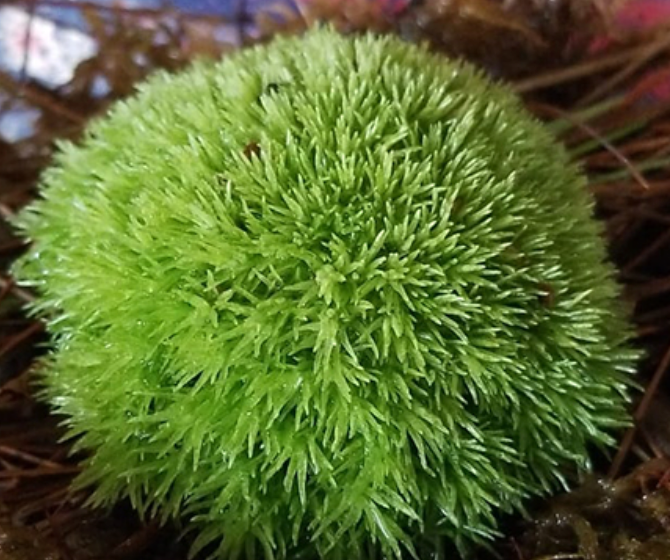Mosswholesale
Terrarium moss 15cm tall Polytrichum juniperinum moss with Phytosanitary certification and Passport, grown by moss supplier
Terrarium moss 15cm tall Polytrichum juniperinum moss with Phytosanitary certification and Passport, grown by moss supplier
Impossible de charger la disponibilité du service de retrait
Delivery information: We ship with DHL for orders of 100euros and more we give free shipping, for small orders we ship with Laposte. We will be sending plant passports with each species, your order will arrive in 2-3 days with DHL.
Polytrichum juniperinum Is a full shade high humidity moss that grows on Sandy soil, they long and complex rhizome system knits together so the tall moss is securely up right, new growth coms from the rhizomes.
Watch this video to see our moss: https://www.tiktok.com/@thebryophytanurse/video/7174032278329347333?is_from_webapp=1&sender_device=pc&web_id=7161903262316185094
We sell Polytrichum juniperinum as a grown moss in many dimensions or as inoculated clay/Alfisols discs with spores and mother moss, we also sell the correct "Growing Substrate" for this moss.
Your order will be packed safely and I'll send your Internation tracking number so you can follow your order travels to you :)
Polytrichum juniperinum, is a most beautiful tall moss achieving heights of 10 to 15cm she really stands above the crowd and is quite stunning all year round, commonly known as juniper haircap or juniper polytrichum moss, she is an evergreen and perennial species of moss that is widely distributed, growing on every continent including Antarctica.
Check out our organic goat milk fertiliser pellets for moss!
Our pellets are made from full fat unpasteurized goat milk straight from the udder, mixed with red clay and dehydrated at 70 degrees. Our fertiliser pellets are perfect for terrariums, living walls, moss gardens exterior as interior. But of course, this is an amazing fertiliser for all plants including roses, vegetables, pot plants etc.
Why is goat milk the best fertiliser for moss and other terrarium plants?
This is our secret to the beautiful moss we grow in our moss nursery, our ferns and succulents and orchids and other rock garden plants, in fact, our whole farm!
Like all plants, moss needs nitrogen, either gleaned from the soil and substrate or from water uptake. If your moss doesn’t get enough nutrients from rainfall or substrate a mild, organic fertilizer, such as one containing lactic acid from goat milk which non-protein nitrogen content is usually 5-8 % of total nitrogen. Signs your moss needs fertilization include spotty growth and poor color.
You will be receiving moss which has been dehydrated for shipping, when she arrives just rehydrate her by spraying water on her, and within seconds she comes back to life. each plant is separated and gently taken out of the clay substrate in which she's grown, being careful not to harm the long root. They will be sent to you in a package bag in a padded envelope. When the package arrives just plant the moss as a bundle or separate them and soon they will grow smaller plants around their stems. Mosses can remain alive even during periods of drought, resuming photosynthesis when moistened again by rain or even fog. Do have a look at my other moss, liverwort, and lichen collection for sale in my Etsy shop, and chose a selection
Our clay discs are inoculated with Polytrichum juniperinum spores which, once wet, will grow after 3 weeks into moss that then connect together into a carpet and spread from there. The benefit of growing from spores is 1- they grow and thrive in the environment, if terrarium or moss garden, or water feature 2- the clay discs can be molded into any shape once wet and will stick to any surface. You can also divide the discs as they are inoculated with thousands of spores. To give the spores the correct substrate 3 discs is equal to 30x30cm of the substrate, you simply mix the clay disc into the substrate and spread it into a 30x30cm carpet.
https://youtu.be/iYNC0eBMga0
Do have a look at my other moss and liverwort and lichen species for sale and buy a selection, for your moss garden, terrariums, and paludarium
The stems are reddish with grey-green leaves that have a distinctive red-brown tip, they generally grow in thin, interwoven mats, and hardly as closely associated individuals. Juniper haircap moss have a well-developed system of tiny tubes for carrying water from the rhizoids to leaves that is uncharacteristic of mosses, resembling the system that has evolved in vascular plants such as ferns, gymnosperms and angiosperms. As a result of this developed system, stems have greater potential for height than in typical mosses.
Juniper haircap moss grows across a wide gradient of habitats but it is most commonly found on dry, acidic, exposed habitats. It is frequent in areas that previously experienced disturbances such as fire and logging. Other areas they occupy are mineral soil, humus and rocks, stumps, banks, trailsides and dry open woods. Although Juniper haircap moss is not usually found in moist or wet environments, it has been found growing on moist woods and other moist sites such as streambanks.
It is a dioecious plant, meaning that the male and female gametophytes are on separate plants. Juniper haircap moss have very obvious male and female parts. Male plants are said to be unusual because they continue growing without losing the old male organs. The male plants are very noticeable due to their bright reddish orange modified leaves that form small terminal 'flowers' at the shoot ends. The plant has a gametophyte dominant life cycle similar to other mosses. Water is required for reproduction to take place, to enable the sperm to swim down the neck of the archegonia to reach the egg. Once fertilization takes place, the sporophyte of the juniper haircap moss lives on the female gametophyte, growing out of the archegonia. The sporophyte consists of a foot, stalk, a spore capsule, an operculum, and a calyptra. There are 64 short blunt teeth at the top surrounding the capsule mouth and the hood of the capsule, the calyptra, has long hairs that extends down the entire length of the capsule, hence the name 'haircap moss'.
They evolved about 500 million years ago. Like other land plants, mosses contain green chlorophyll and make their own food through photosynthesis, which involves using the energy of the sun to combine carbon dioxide and water to make sugars.
Mosses are nonvascular plants, which means that they lack a vascular system. Because nonvascular plants lack lignified water-conducting tissues, they can't become as tall as most vascular plants.
The Ecological Roles of Mosses - Mosses play essential roles in the natural world:
Mosses don't need previously developed soil to survive, because they obtain their mineral nutrients from rain or running water.
This means that mosses are sometimes the first to colonize newly exposed areas. They promote soil formation, because (as they grow) dust and humus collects among the stems. When they die, their bodies decompose and add to the developing soil.
Mosses grow where other plants cannot, because they can survive without being rooted in soil. They can survive on cliffs, rocks, steep hills, and tree trunks. Mosses colonize the barren rocks and exposed areas of hills, and make them suitable for growing larger vascular plants by depositing humus soil and plant debris. Mosses can remain alive even during periods of drought, resuming photosynthesis when moistened again by rain or even fog.
Mosses play an important role in the global carbon cycle. They absorb carbon dioxide and release oxygen. In areas with cool climates, decomposition is slow because of cold temperatures. This means that large amounts of carbon are sequestered in the Sphagnum of bogs.
Mosses also contribute to the environment by absorbing water from rainfall and runoff, then slowly releasing it to the ground or atmosphere. This reduces stream erosion and fluctuating lake levels.
Mosses also provide habitat on which many species ultimately depend, underpinning entire ecosystems. Mosses provide shelter for other organisms such as small insects. The insects, in turn, provide food for frogs, which in turn provide food for snakes, which in turn provide food for carnivores like bobcats.
Materials
Materials
Shipping & Returns
Shipping & Returns
Dimensions
Dimensions
Care Instructions
Care Instructions
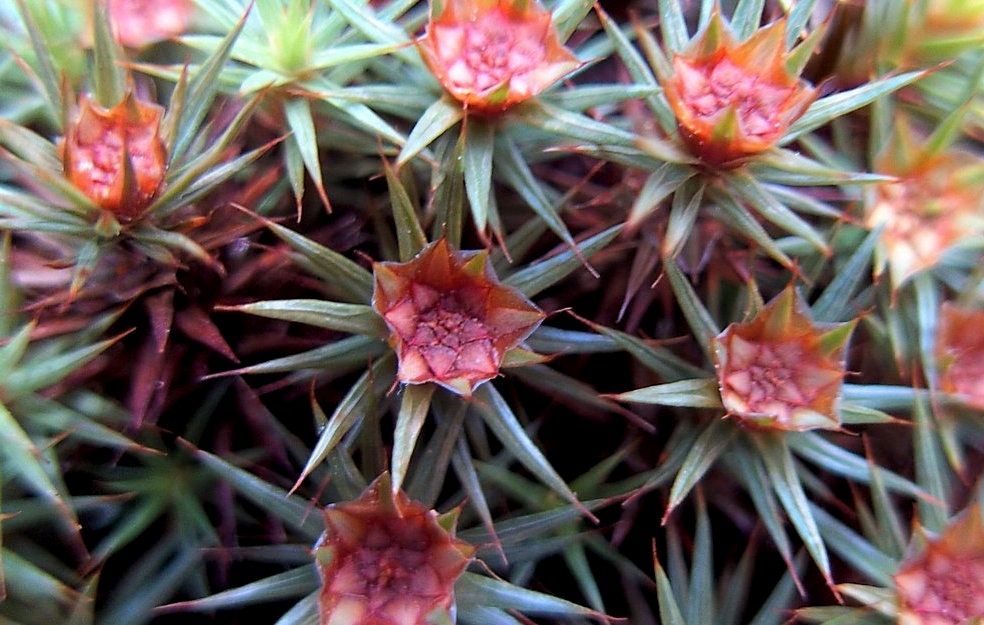
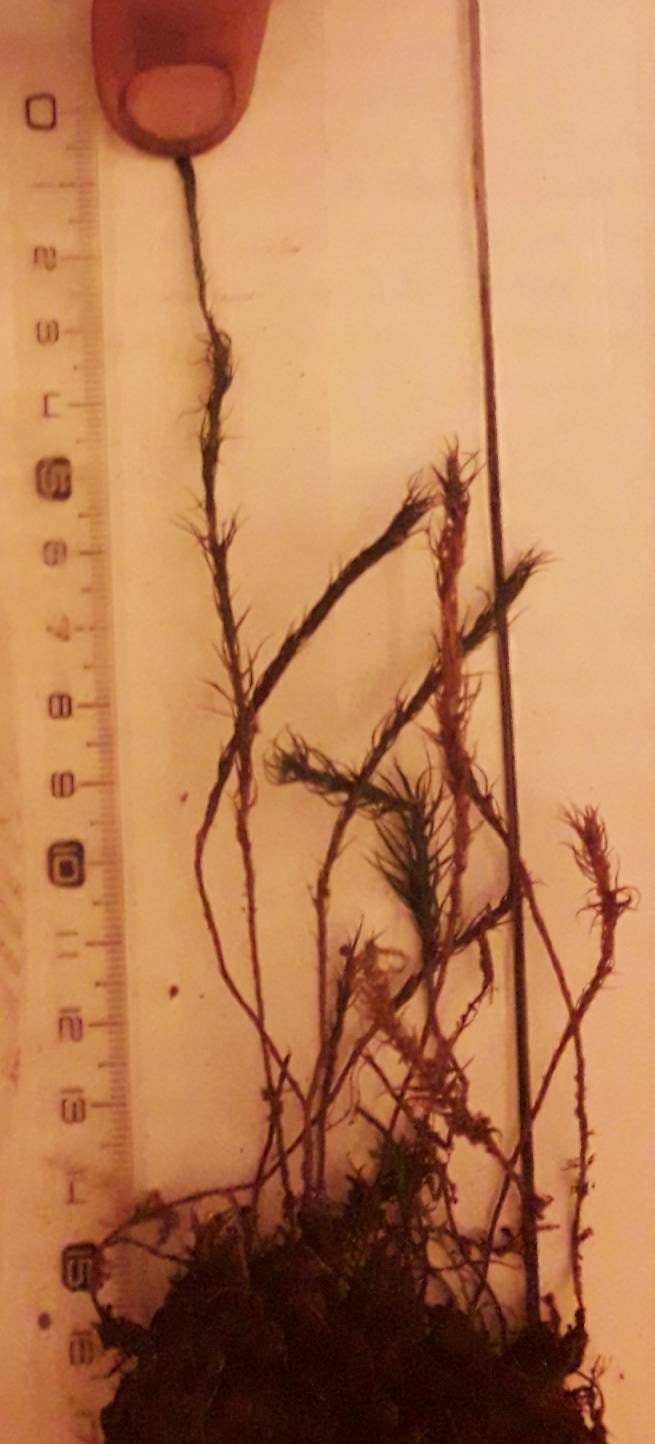

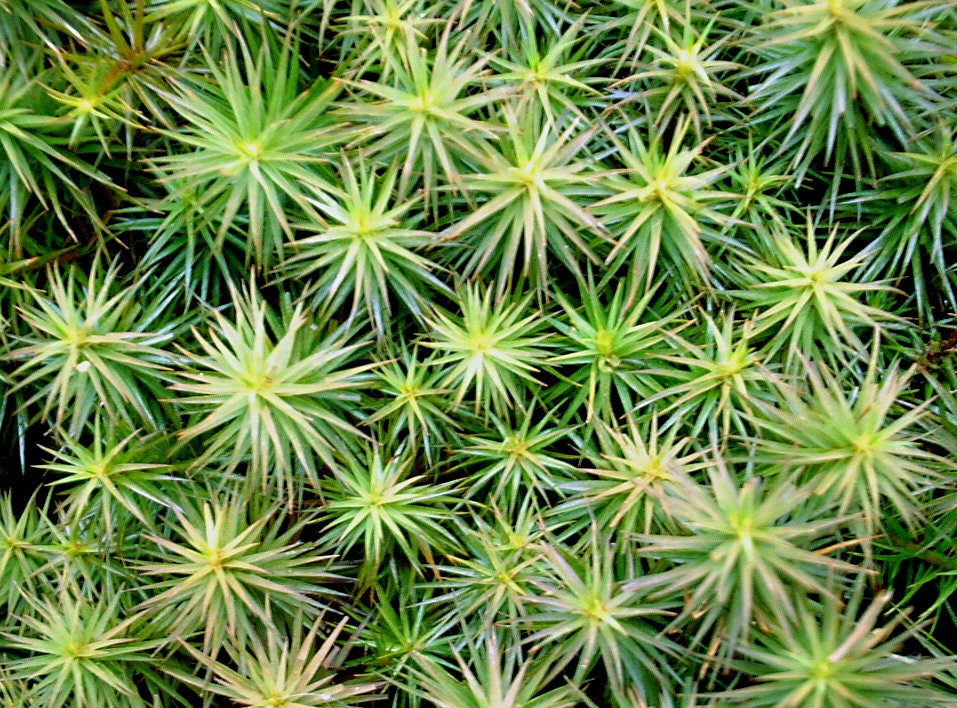
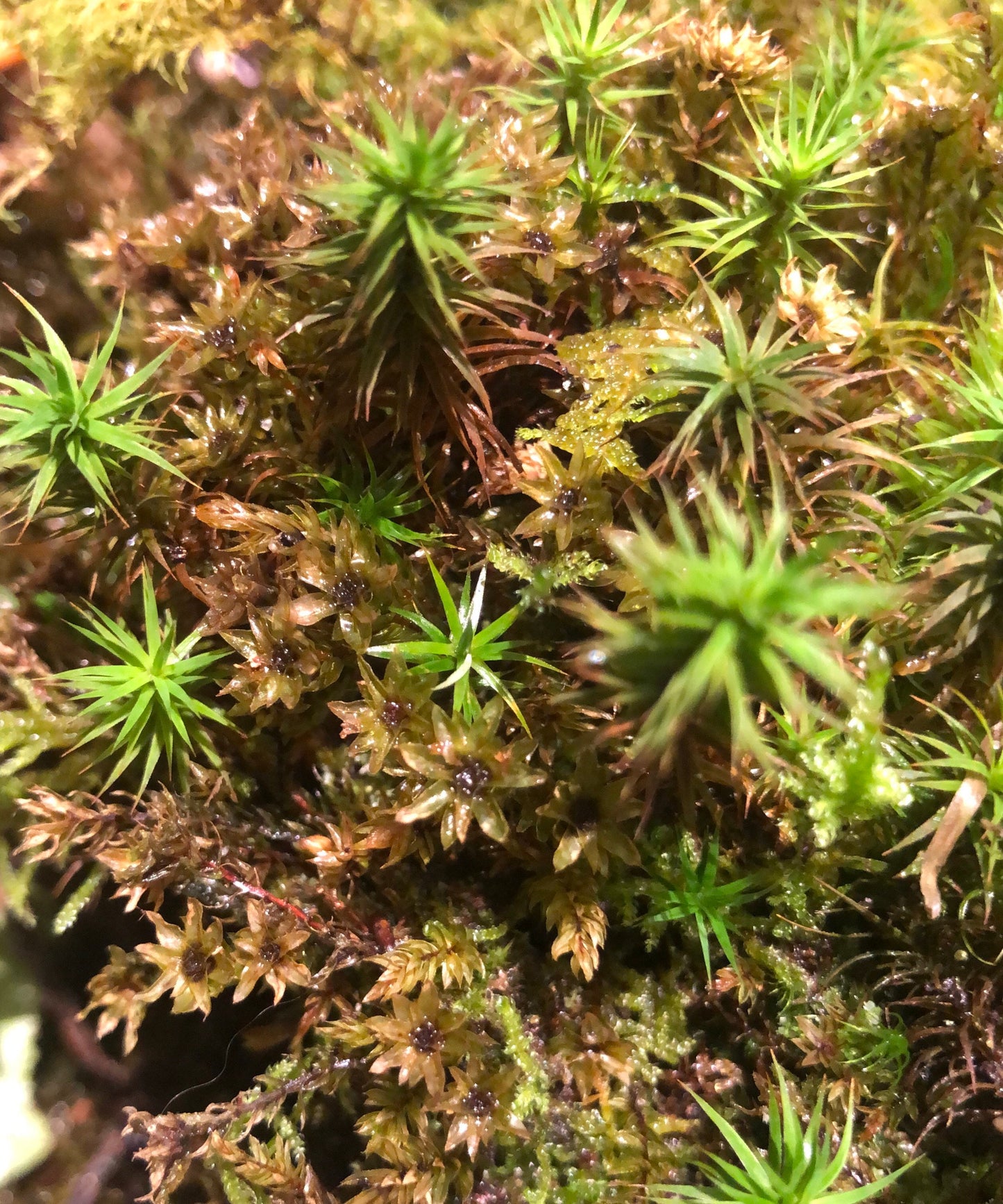
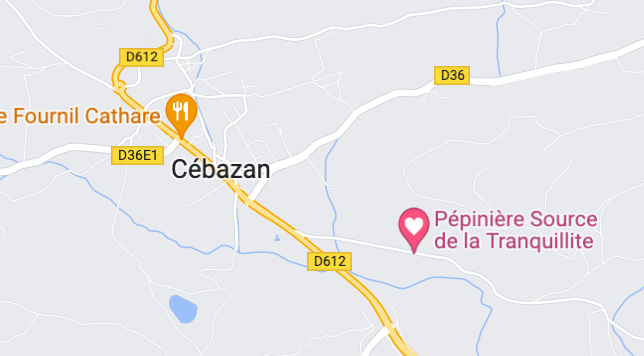
-
Free Shipping
We offer free shipping in France! and internationally for orders of 500 euros or more.
